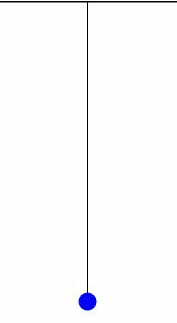 METRONOME HISTORY
METRONOME HISTORY
In the late 16th century the Italian scientist, Galileo Galilei, studied and explored the motion of the pend ulum. Eventually, pendulums inspired the invention of a musical pulse machine called the Metronome.
ulum. Eventually, pendulums inspired the invention of a musical pulse machine called the Metronome.
 ulum. Eventually, pendulums inspired the invention of a musical pulse machine called the Metronome.
ulum. Eventually, pendulums inspired the invention of a musical pulse machine called the Metronome. .
Experimentation determined that varying the location of weights placed on a pendulum produced back-and-forth motion at different speeds, depending on where the weight is placed.

.
Some of you have seen a Grandfather Clock. The motion of its weighted pendulum regulates its speed. This back-and-forth motion of the pendulum at a constant interval of seconds, powers the gears of the clock, which direct it to keep proper time. Like clocks, metronomes help musicians to keep proper time.
.
In music terms – intervals of time are measured as Beats per Minute, which are abbreviated as BPM. A metronome setting of 60 BPM measures seconds.
;
German inventor, Johann Maelzel, is credited with standardizing and manufacturing metronomes called the “Maelzel Metronome.” Composers began to utilize MM as an abbreviation for metronome marking.
.
Ludwig van Beethoven was one of the first composers to include Maelzel Metronome (MM) speed indications in his music. In 1817, Beethoven placed metronome markings in his first 8 Symphonies.
.
Advances in technology have improved the accuracy of metronomes. The choice of the exact speed at which to perform a piece of music is based on traditional performance practice and on the performer’s own interpretation.
.
I’m pretty sure that Beethoven would enjoy the electronic metronomes in use today. Metronomes click, light-up, beep, and some even talk!
Intervals of time are measured as BEATS per MINUTE. (Abbreviated as BPM.)



